Part 1 - Edinburgh to Birmingham
Birmingham New Street
By the time Birmingham was reached an Edinburgh - Penzance service would be now just over half way through its journey. Again the traveller would be greeted by increasingly industrial scene particularly after passing Hams Hall power station. As with the approach to Sheffield the approach from the north east presented one of the more built up, gritty sides of the city. The final entry into New Street was one of viaducts, cuttings and noisy tunnels and of a modern station leaving much to be desired. No longer a cathedral to Victorian engineering, now a developers plan for the maximisation of office and retail space with a station in the basement.
Possibly one of the first Peaks to visit the Birmingham area was Derby's 700th diesel, D21 delivered to traffic during March 1961 and being noted at Saltley for crew training on 12th. D91 soon followed for crew training, two turns left Saltley at 9.40am & 11.20am running via Castle Bromwich and Aldridge. Other Peaks noted in the Birmingham area were arriving on 5.20pm passenger Derby - Birmingham, returning north next morning on the 8.05am Birmingham - Newcastle as far as York where the locomotive returns on the 2.24pm (12.43pm ex Newcastle) to Bristol, this latter turn being for the training of York crews.
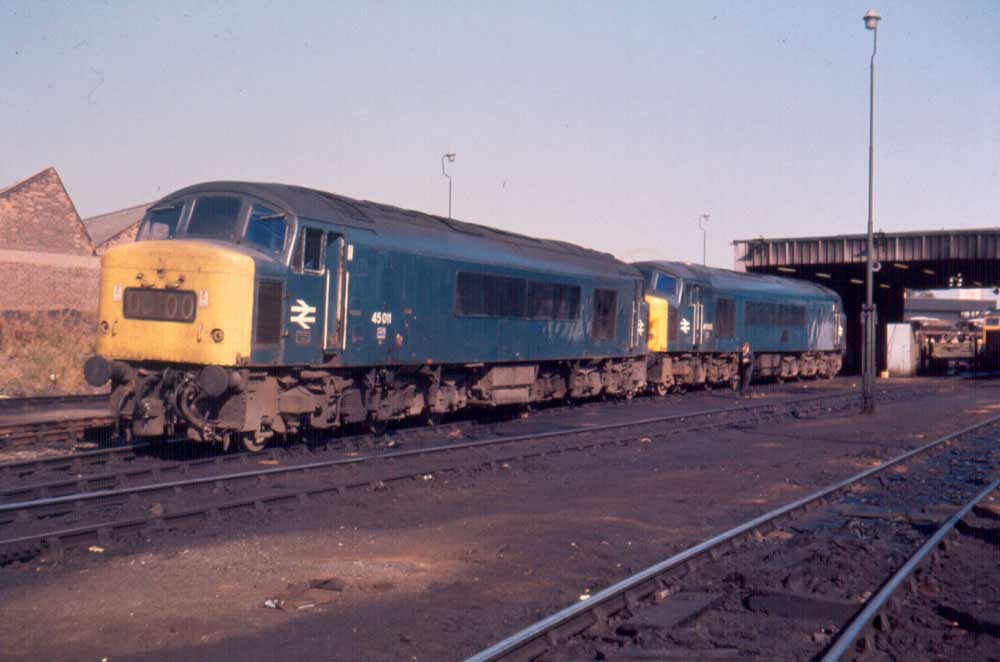
Peak transfers during 1965 were pretty much limited to the shuffling of a small number of locomotives between the LMR depots throughout the year. However during March four Peaks were transferred to Saltley (2E), they returned to the Midland Lines (ML) during May.
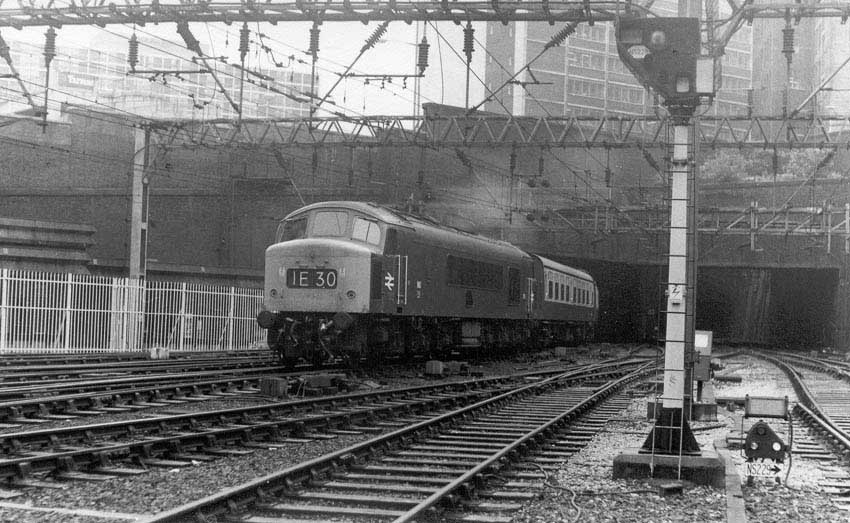
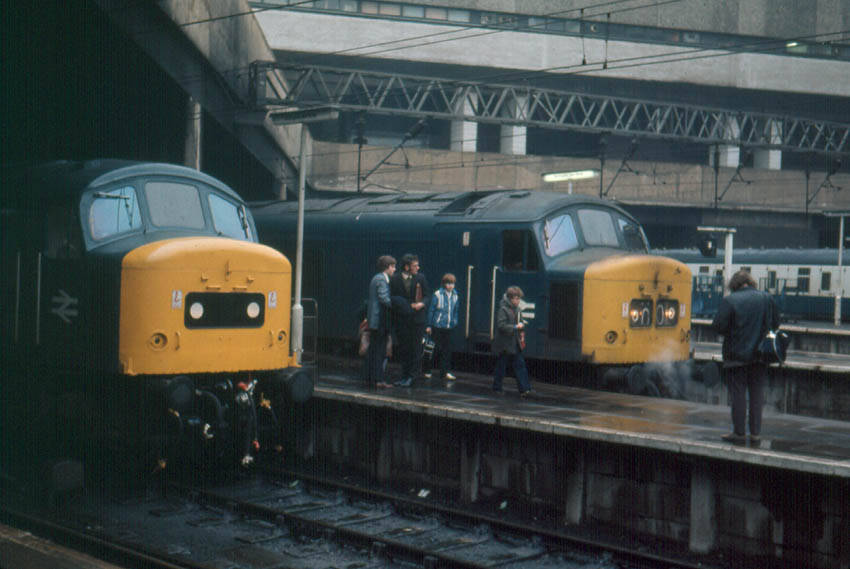
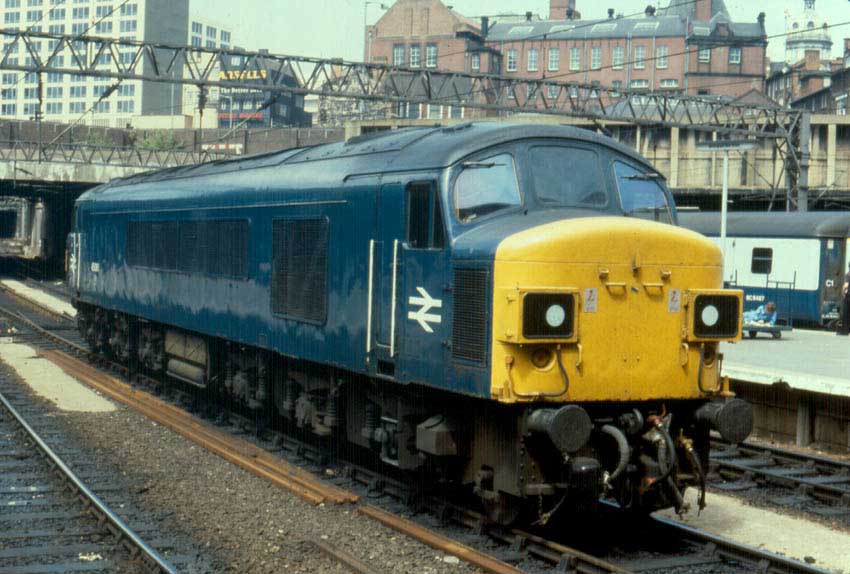
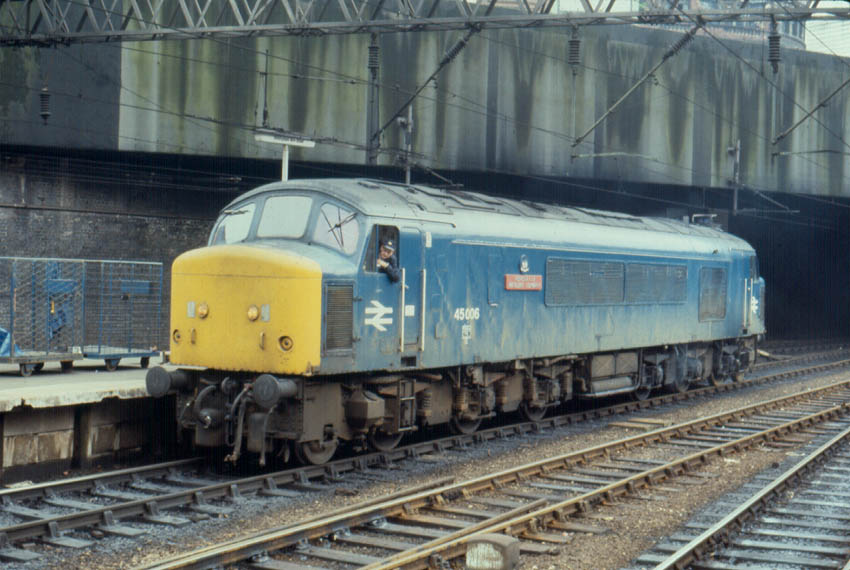
The only way in and out of New Street was through one of its tunnels, for those travelling south west it was a long curving tunnel before breaking out into surburbia.
Longbridge
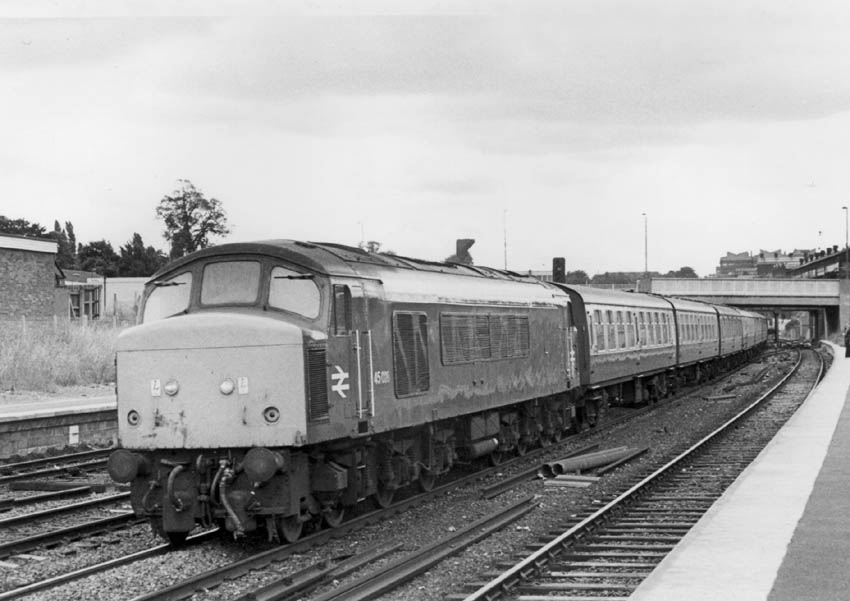
Lickey Incline
It was not long before the suburbs would fall away and more of England's 'green & pleasant land' would appear through the carriage window. Not so pleasant for the railway was the presence of the Lickey Incline, two miles of a 1 in 37 grade, downhill for the Bristol bound trains but a challenge for Birmingham bound trains.
Trials during April 1962 using D40 and D0280 on the Lickey incline led to the ending of banking duties for a number of passenger and freight trains, including passengers trains of up to twelve coaches in length.
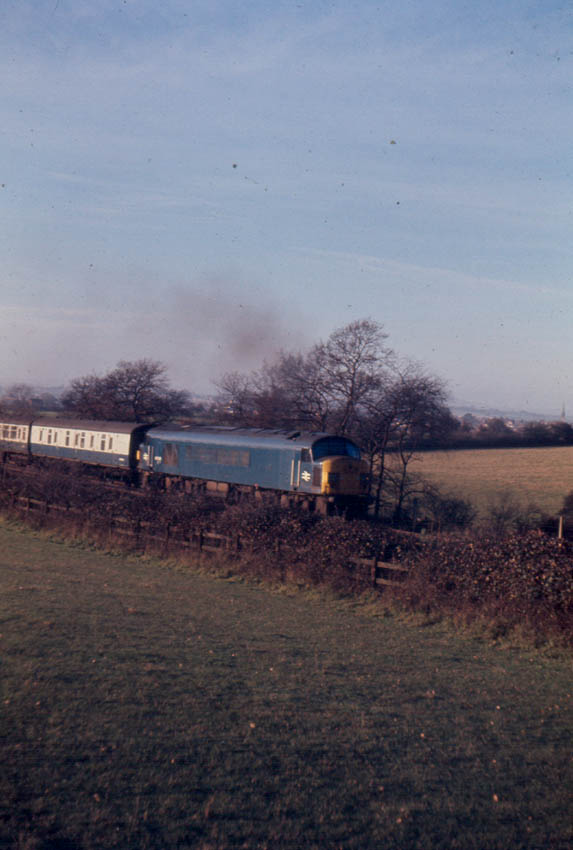

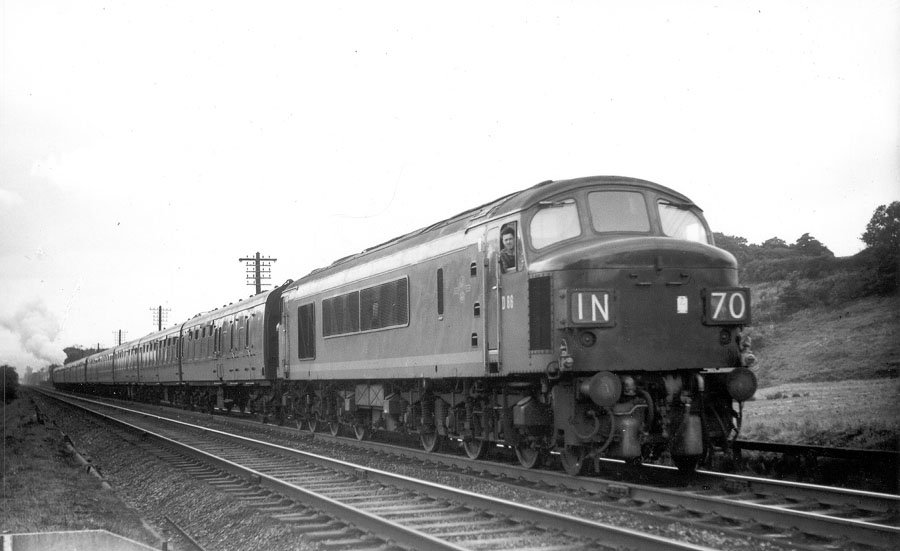
Once clear of Bromsgrove the route lay through undulating countryside, of closed stations and abandoned goods yards, many of which would become occupied by one man businesses, of car repairs, storage lockups & lumber yards.
Gloucester
Gloucester always seemed to have some activity of interest, was it the two strangely connected stations, or the junction of the line to Cardiff via Chepstow, or that it maintained a small shed? Or perhaps it was one of the extremities of the old 'Midland Railtourer' ticket, which in my day meant the good possibility of seeing a WR diesel hydraulic locomotive of somekind.
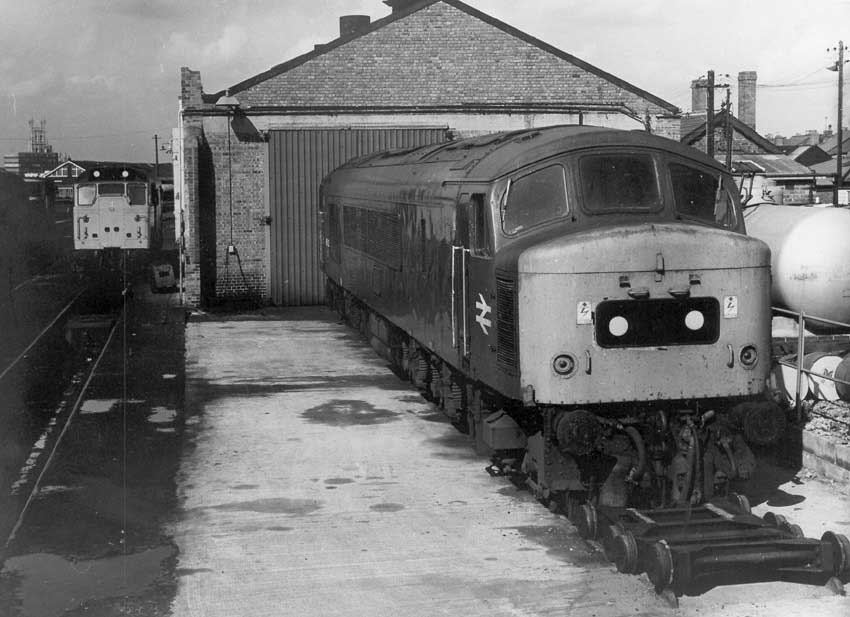
Bristol
South of Gloucester the Peaks once again had the opportunity to stretch their legs and provide train recorders with a stretch of line known for its ability to produce quality high performance workings, particularly in the northbound direction. The early Peaks used the old Midland route into Bristol, rationalisation led to the NE/SW services utilising the GWR mainline via Filton.
During May 1961 D93 was loaned to the Western Region (82B - St Phillips Marsh but worked out of Barrow Road), being noted westbound through Barnt Green light engine on April 10th. It would be used for crew training and running-in between Bristol & Gloucester. On June 12th 1961 a number of NE/SW services became Peak hauled, included were the 6.30pm Bristol - Birmingham New Street, returning south-west at 11.30pm on a parcels and heading back north on the next morning's 8.40am Bristol - Sheffield. Another working taken over by diesels was a 5.00pm Bristol - Derby. By July 1961 seven passenger services into Bristol were Peak hauled, five returned north as passenger & two as parcels, further Peaks were loaned to Barrow Road as they became available, though the borrowed Crewe built Peaks were exchanged for recently built Derby variants!
Barrow Road reached its allocated number of Peaks with D33 - D42 officially transferred there during October 1961, though servicing was carried out at the recently opened Bath Road diesel depot - this allocation of Peaks caused Barrow Road to loose its Jubilees. Four diagrams were now available over the NE/SW route, the 10.30am Bristol - Newcastle & 8.15am Newcastle - Cardiff, the 8.30am Cardiff - Newcastle & 7.5pm Newcastle - Bristol, the 8.5am Birmingham - Newcastle & 3.30pm Newcastle - Birmingham and the 6.55am York - Edinburgh (to Newcastle) & 12.43 Newcastle - Bristol. As more Peaks came off the production lines they were used to take over the majority of the freights between Birmingham & Bristol.
The early Class 46s were loaned to many parts of the country, including D149 to Barrow Road (82A) in February 1962. With the NE/SW route sharing a couple of depots that sent the Peaks all over the place (particularly Holbeck & Gateshead) it was not long before a Barrow Road (82A) allocated Peak would find its way into Kings Cross as did D35 on January 9th 1962 working the 5.29pm Leeds - Kings Cross.
An Open Day held at Bristol Bath Road on April 30th 1966 featured several steam locomotives, although since March 6th there had been no steam operation on the Western Region diagrams. Also present was D15 amongst the regular diet of hydraulics. Off the beaten track on May 11th 1966 was D27 turned out by Bristol for the 10.30am Bristol East Depot - Weymouth freight, the Peak came off at Eastleigh returning to Bristol with another freight.
The routing of trains between Gloucester & Bristol during June 1969 found trains working over both the old route - via Mangotsfield and the new route via Stoke Gifford. The routing via Stoke Gifford added about five minutes to the journey time - there were no stations remaining open on the Mangotsfield route.
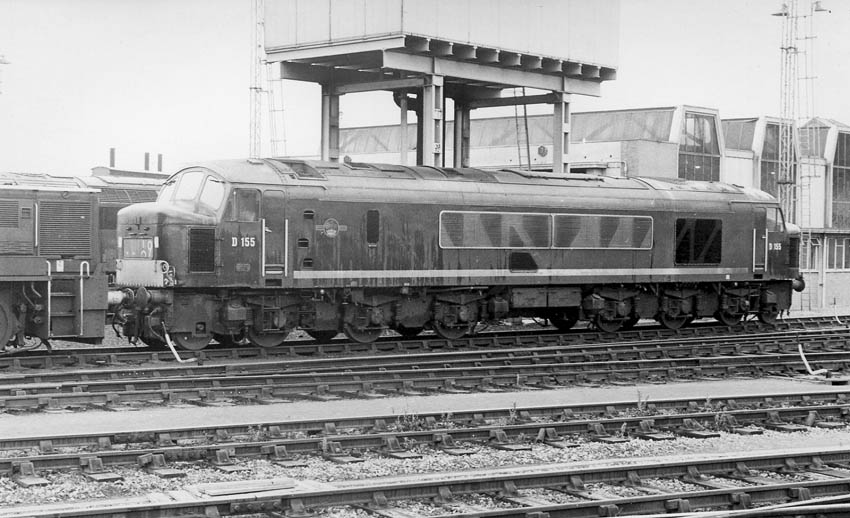
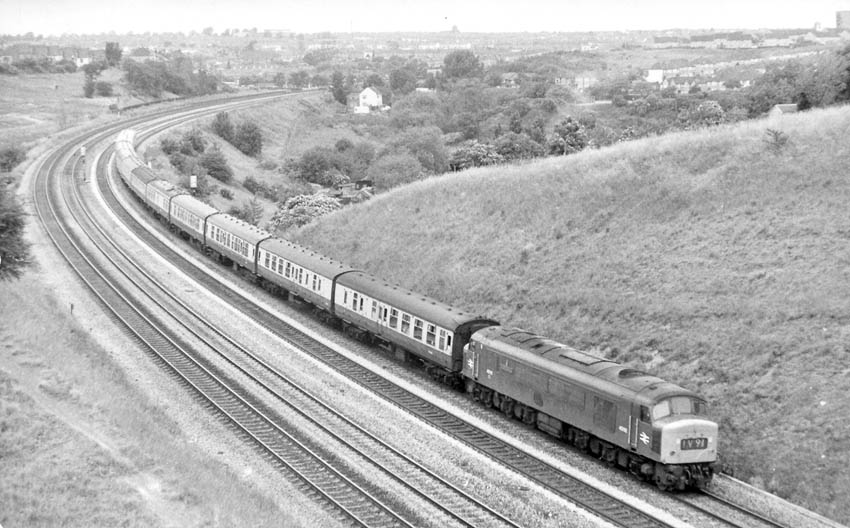

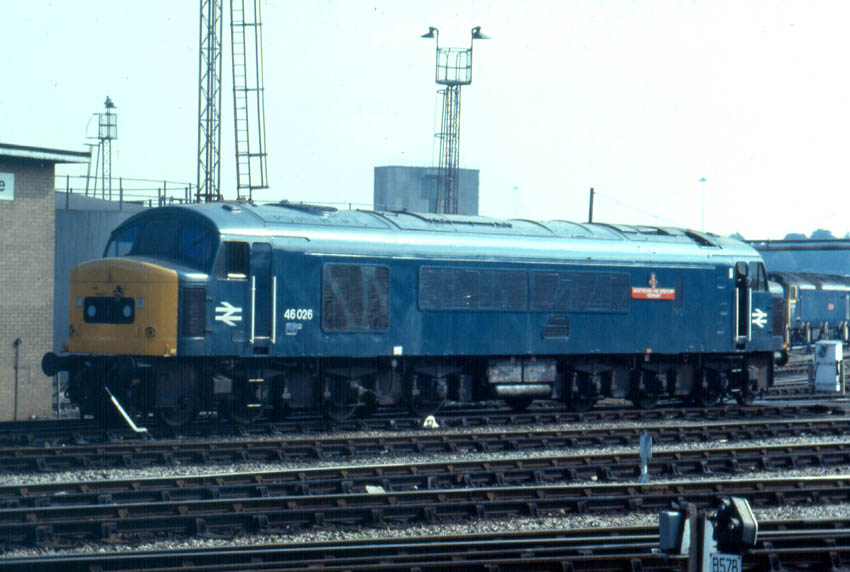
Tiverton Junction
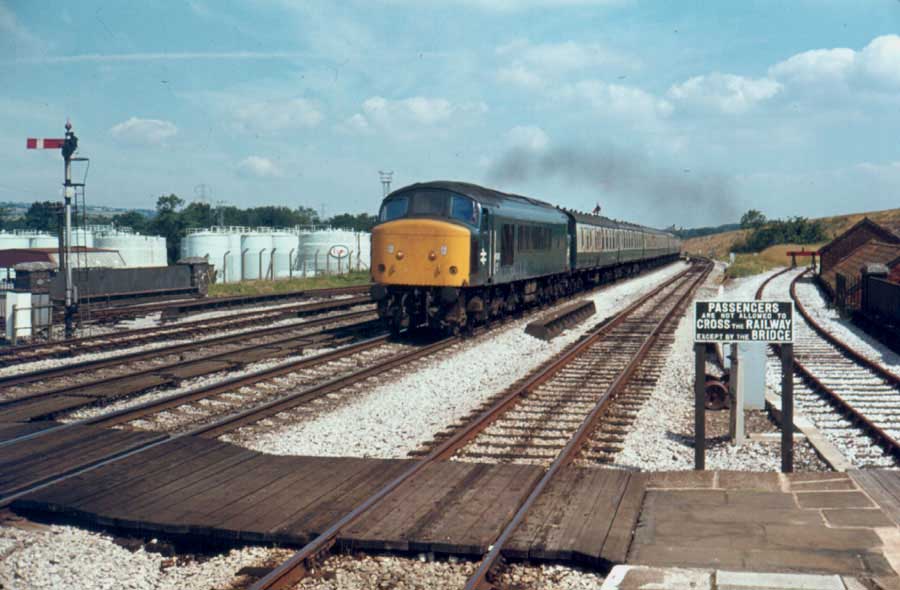
Exeter
The initial allocation of Peaks to Bristol was with the intention to keep them on services north of Bristol, for services working beyond Bristol a locomotive change was standard practice, either to steam or diesel hydraulic power. The occasional Peak of course did slip through and make it further west, largely dependent on a trained Bristol crew being available, but these were rare events in those early days of the Peaks.
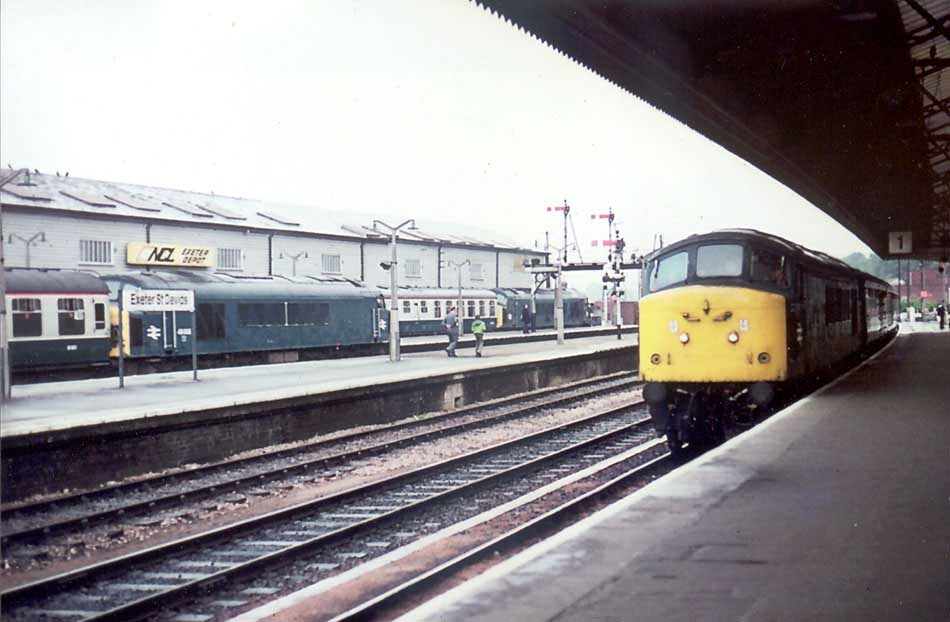
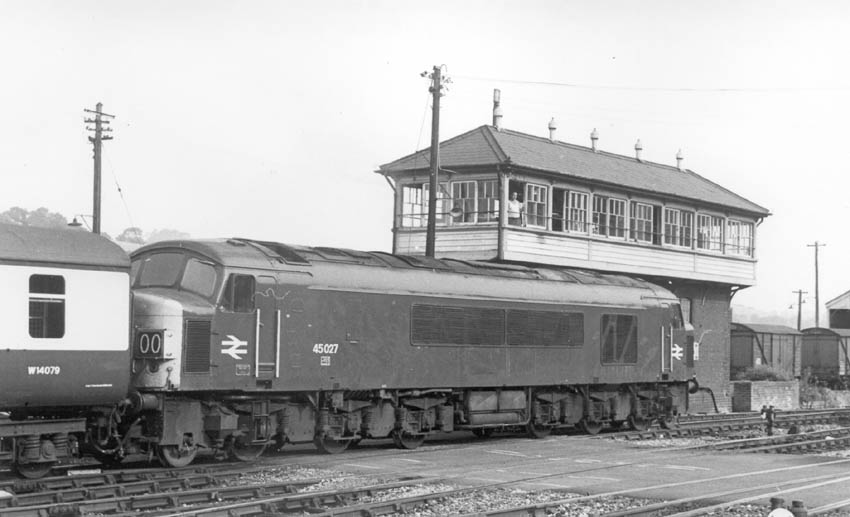
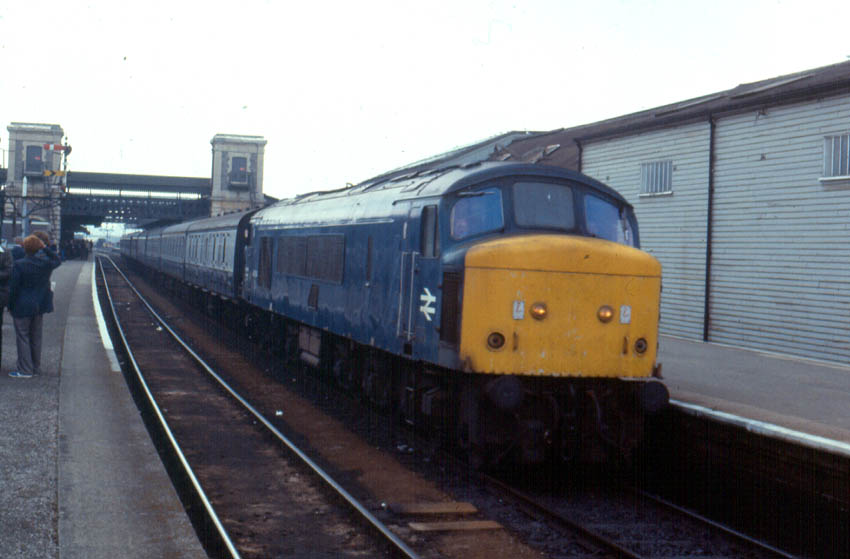
Dawlish/Dawlish Warren
Although I travelled west of Exeter a number of times, on only one occasion did we get off at Dawlish and spend an afternoon taking in the delights of the combination of sun, sea, sand & trains. Fortunately the weather was fine, the tide was out and the trains were frequent, we should have stayed longer!
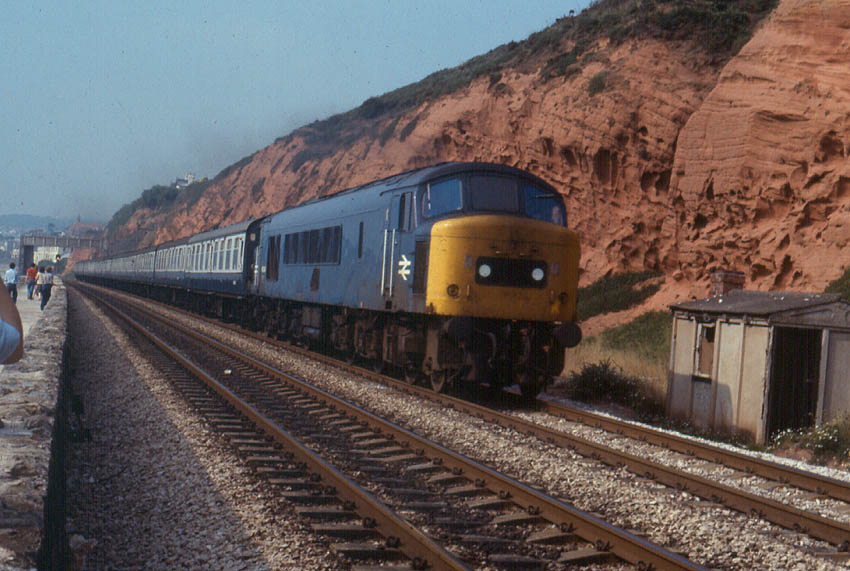
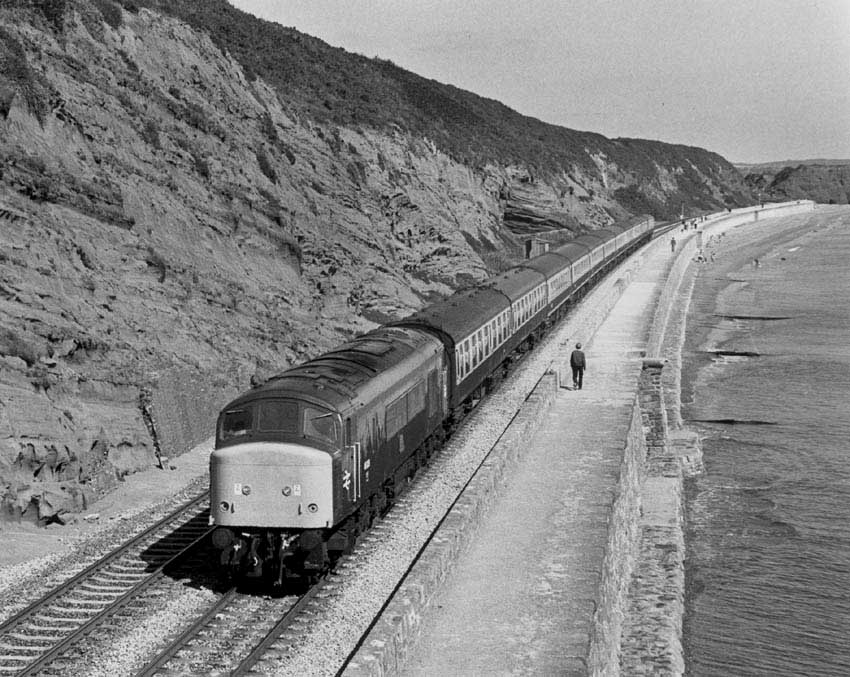
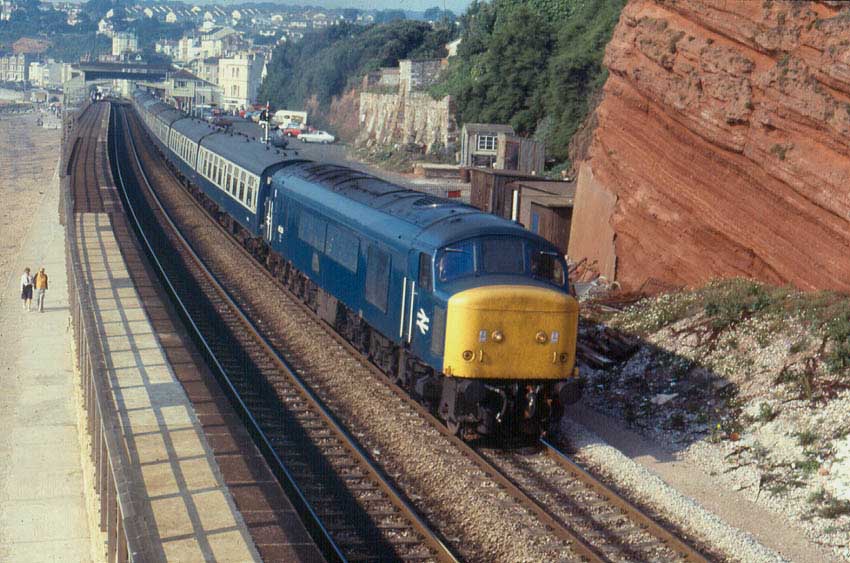
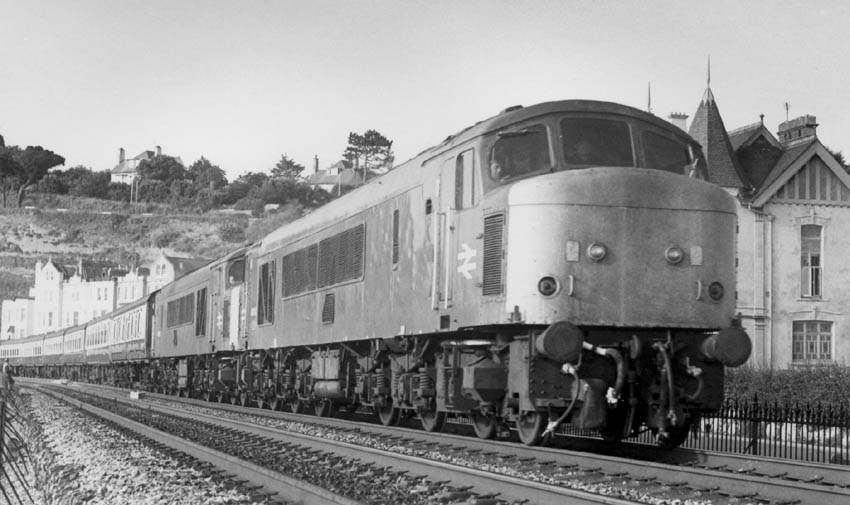
Paignton
South of Newton Abbot the Paignton bound trains left the mainline for a brief journey down the branch to the seaside resort of Paignton. Despite its branch status the line was accessible to the big Type 4's, bringing much activity to the resort, not only for the regular passenger trains but for the many dated summer Saturday extras and the occasional mystery excursion.
For the start of the new timetable in 1971 the 07.20 Paignton - Newcastle & 16.20 return were extended to/from Edinburgh, a journey of 521 miles - the longest passenger working in the UK not passing through London. Likewise at this time the 07.00 Weston super Mare - Newcastle and 16.20 return were also extended to/from Newcastle.
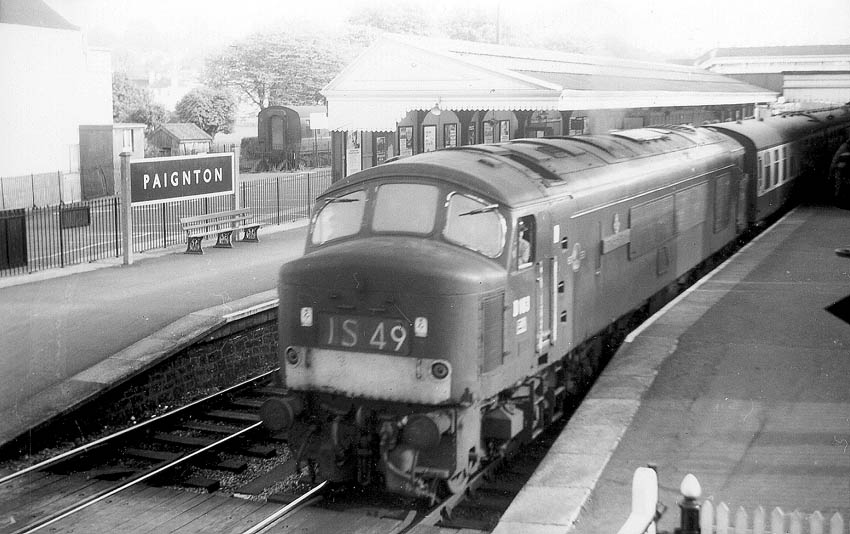
Plymouth
Between Newton Abbot and Plymouth the GWR main line provides a roller coaster ride up and own the banks at Dainton, Rattery & Hemerden, with gradients between 1 in 40 & 1 in 50 they would prove a challenge for those locomotives operating over them, particularly for a fresh engine starting out on its northbound journey from Plymouth.
Although Plymouth Laira was not the most westerly depot in the United Kindom it was the most westerly home for the Peaks with a number of Class 46's allocated there following the retirement of the Warships.
Another unusual event was the visit of D34 to Newton Abbott on October 4th 1963 to test a new washing plant.
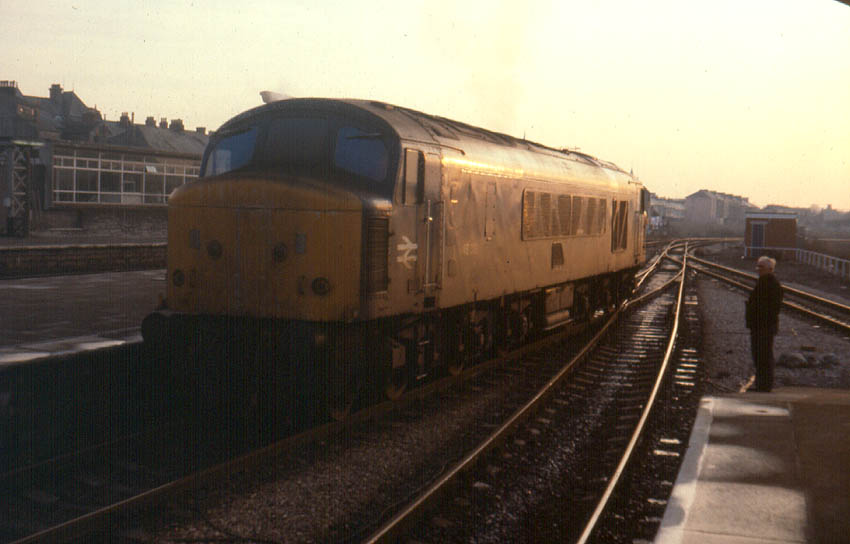

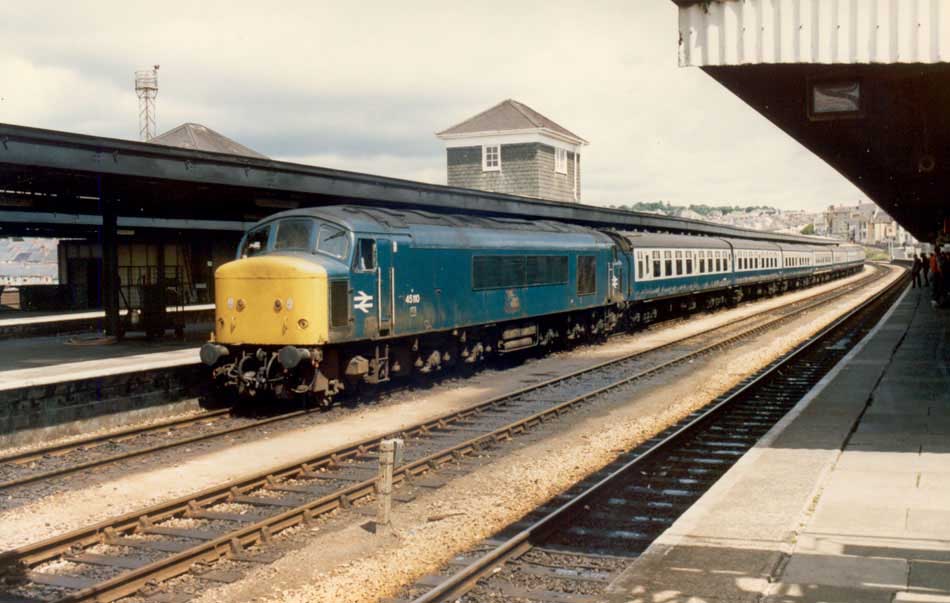
Beyond Plymouth the GWR mainline continued its westerly progress to Penzance, with a number of branches spinning off to service the coastal towns and the china clay industry. Despite their somewhat rigid four axle bogies most of these lines were accessible to the Peaks.
The Newquay Branch
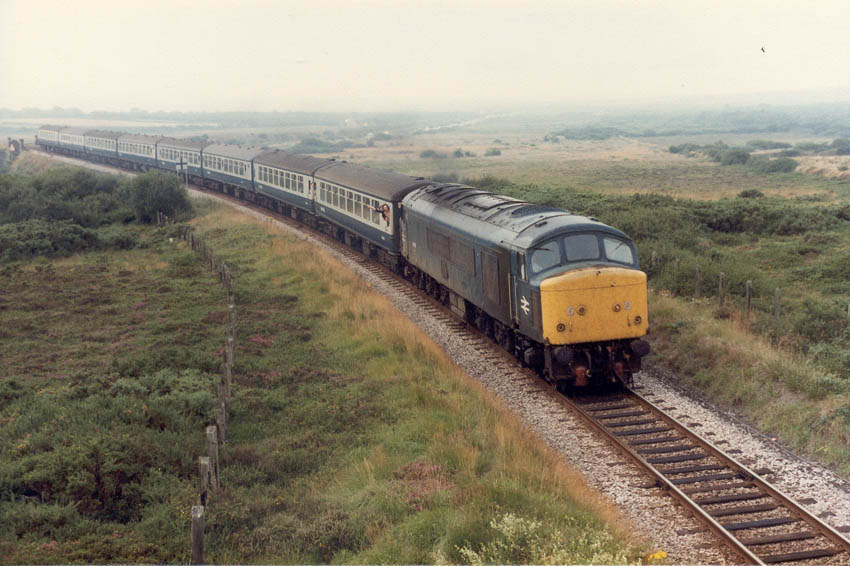
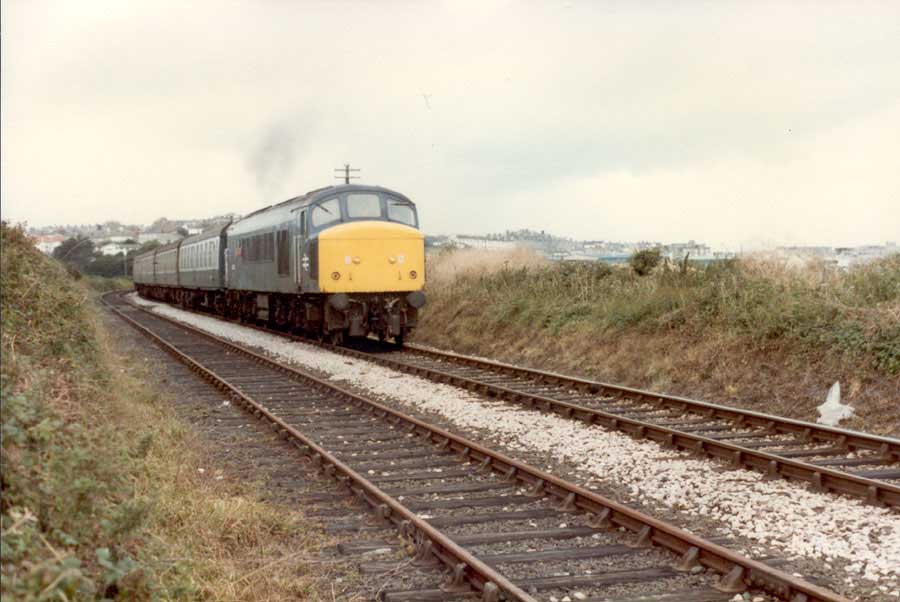
St Austell
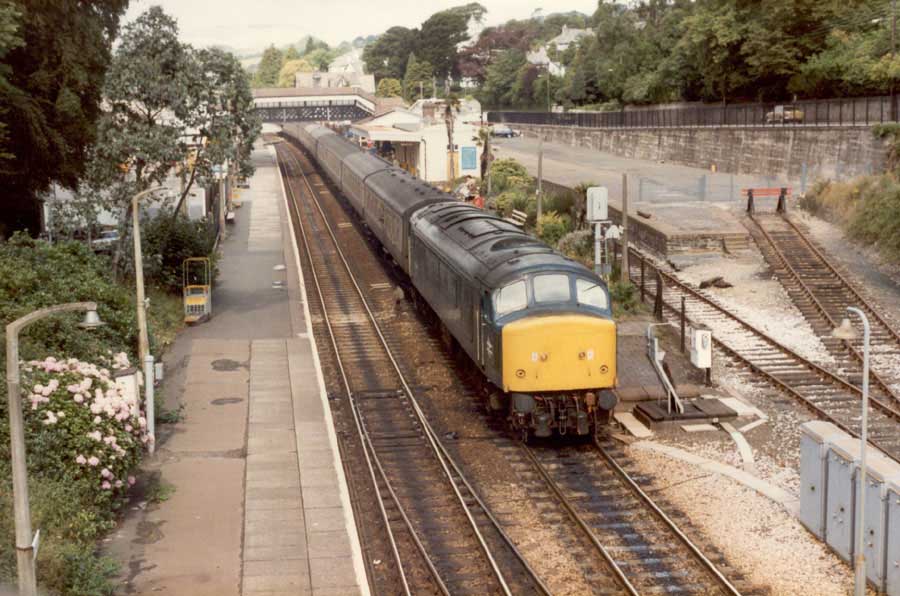
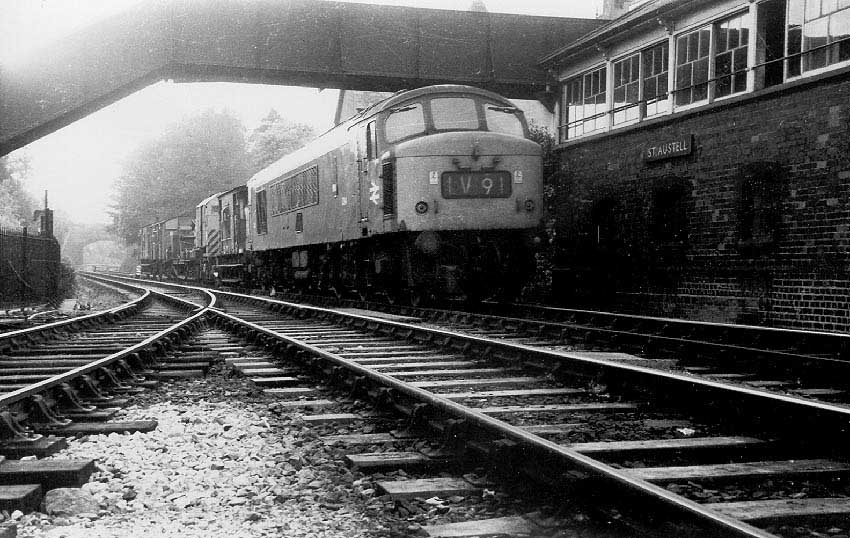
Truro
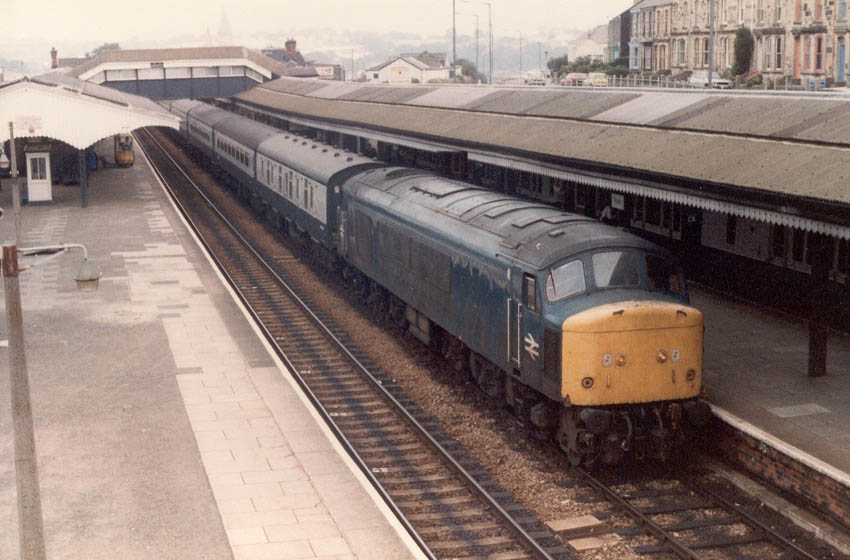
Carn Brae (Redruth)

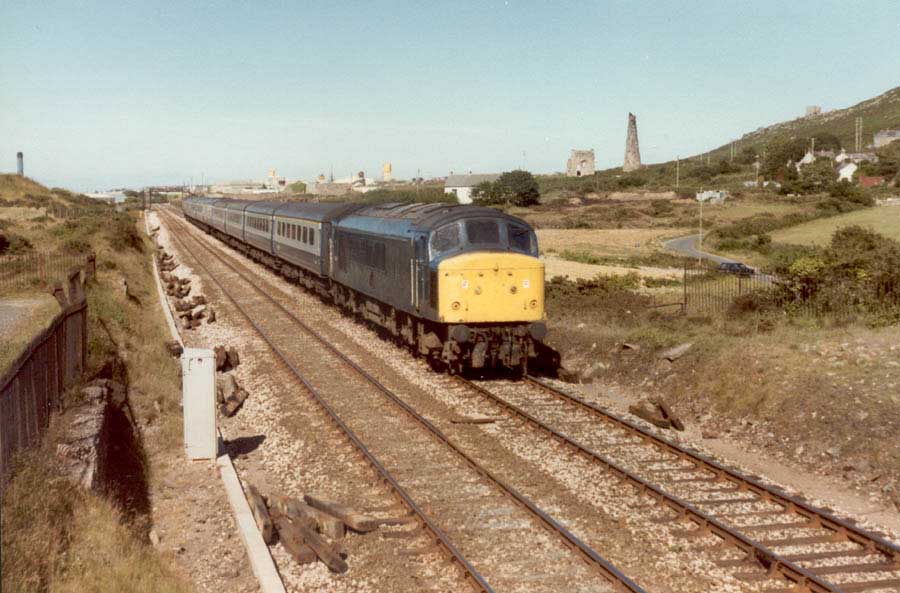
Penzance was the end of the line, its approach signalled by the panoramic view of St Michael's Mount with the sea again coming right up to the seawall that carried the tracks alongside Mount's Bay. The small facilities at Long Rock provided basic servicing for locomotives and rolling stock, Laira was eighty miles away should a locomotive fail here.
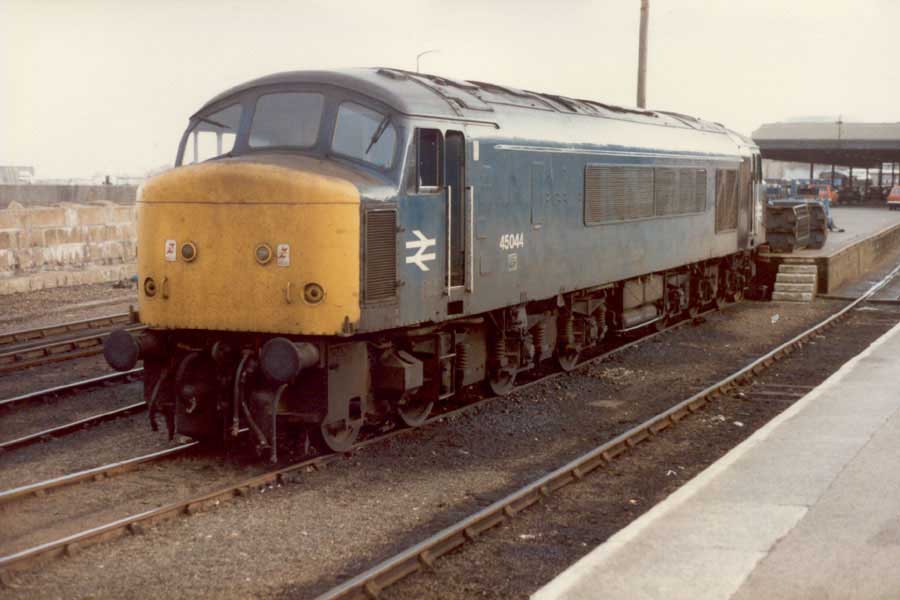
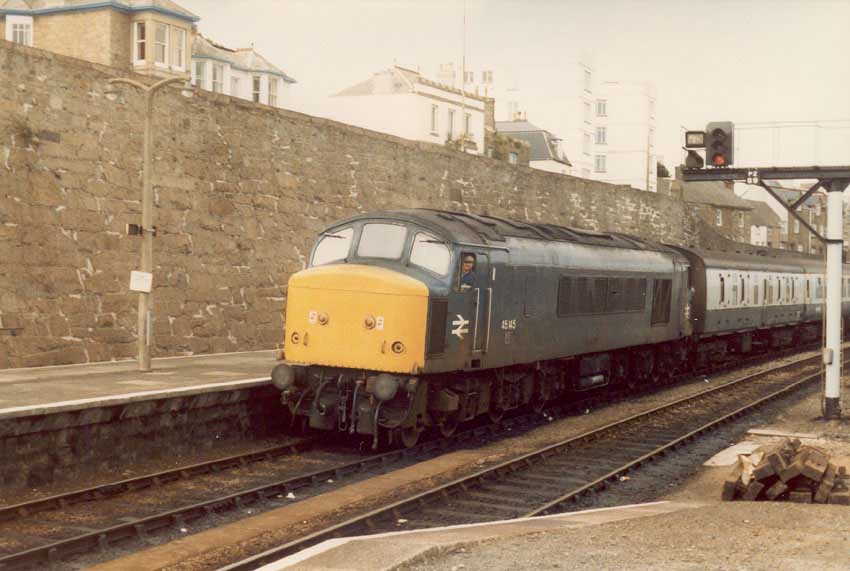
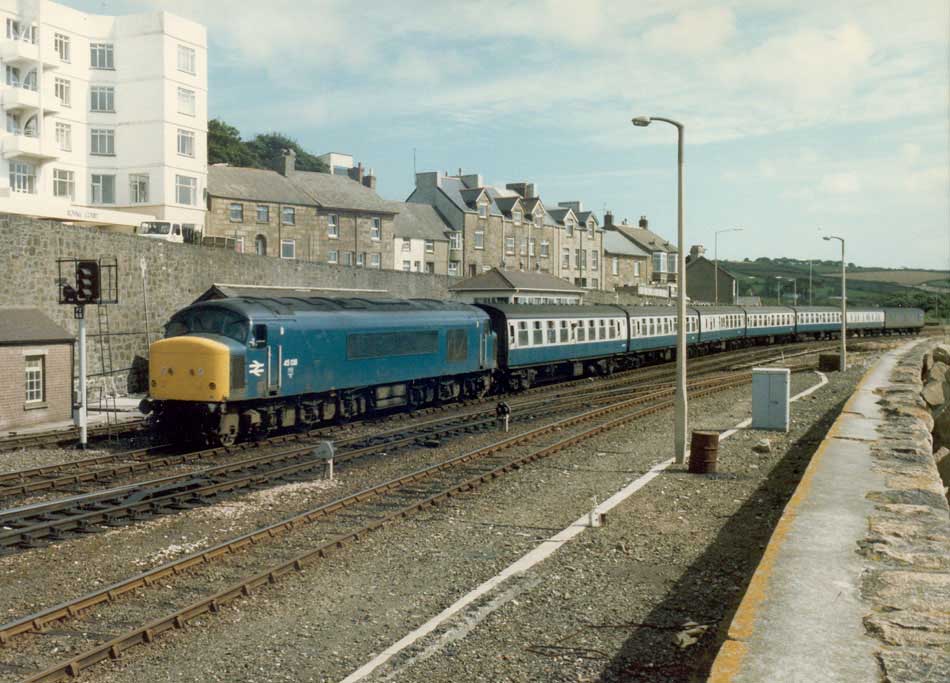
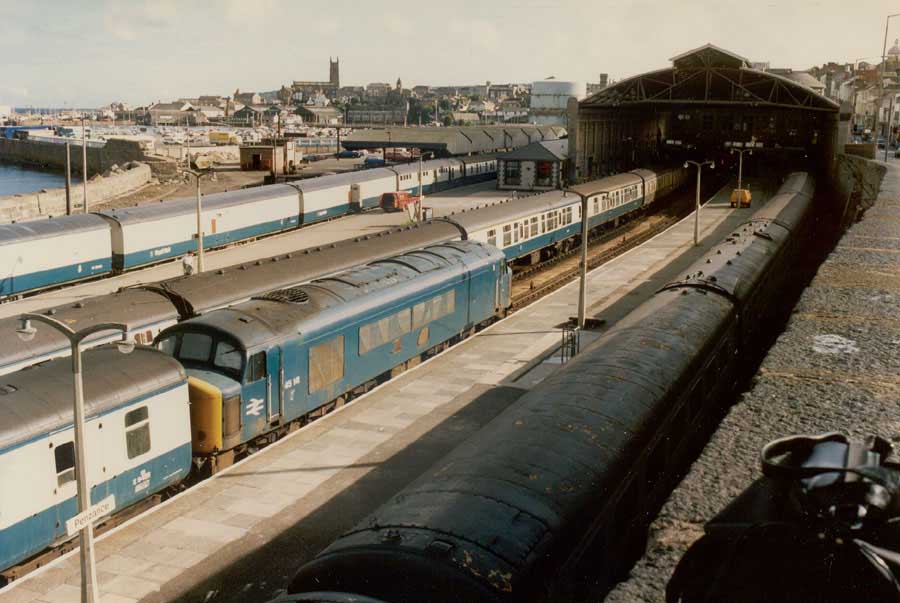
Page added October 16th 2004.
Page last updated January 1st 2006.
Part 1 - Edinburgh to Birmingham
Return to Picture menu